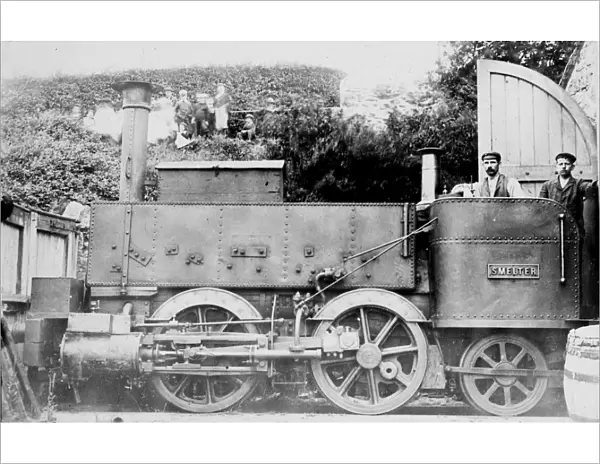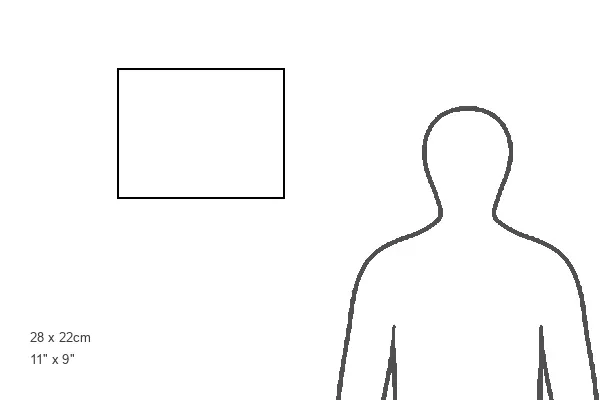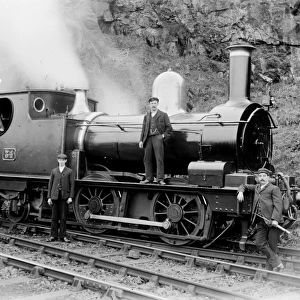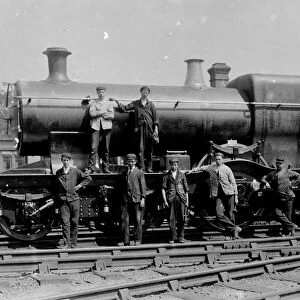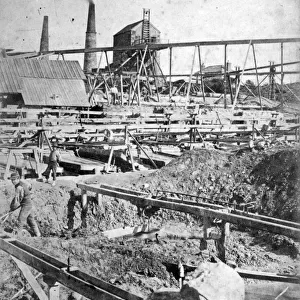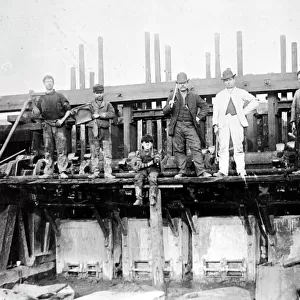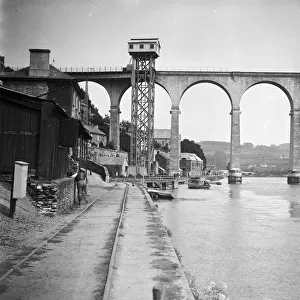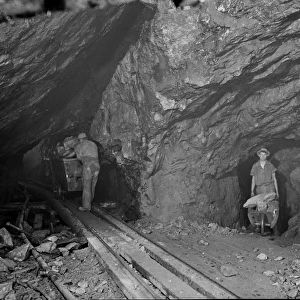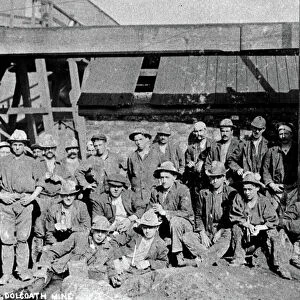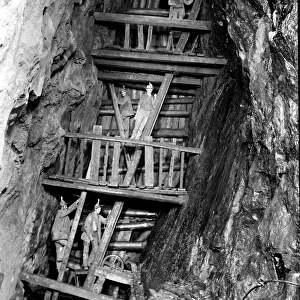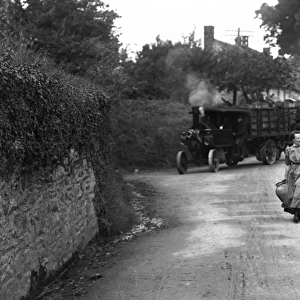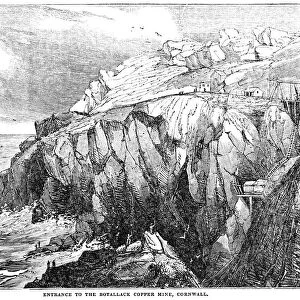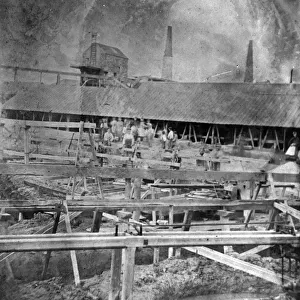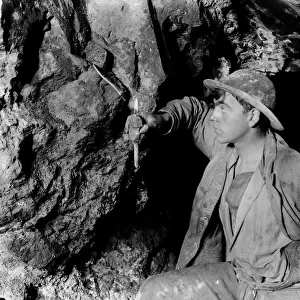Photographic Print > Royal Cornwall Museum > Transport > Railways
Photographic Print : Locomotive Smelter on the Redruth and Chacewater line, Cornwall. After 1854
![]()

Photo Prints from Royal Cornwall Museum
Locomotive Smelter on the Redruth and Chacewater line, Cornwall. After 1854
Driver and fireman posing for the camera and a group of small children looking on from the vantage point of a high hedge in the background. Authorised by an Act of Parliament in 1824, the Redruth and Chacewater Railway opened on January 30th 1826, running from the Gwennap copper mines to the south coast port of Devoran, with a branch line to service the mines of Redruth. The 4ft gauge line carried minerals and goods only and generally worked profitably. It was worked by horses until 1854 when two tank locomotives, Miner and Smelter, were bought - the first steam locomotives in Cornwall. Eventually during the 1860s the two competing lines were joined to form a coast to coast railway line. The line closed in 1915. Photographer: Unknown
Royal Cornwall Museum is the UK's Greatest Museum For Cornish Life & Culture
TRURI : RYrch.1
Media ID 12387165
© From the collection of the RIC
11"x8.5" Photo Print
Introducing a captivating addition to your home or office decor, the Media Storehouse Photographic Print of "Locomotive Smelter on the Redruth and Chacewater line, Cornwall. After 1854." This vintage image, sourced from the Royal Cornwall Museum, offers a glimpse into the past with its intriguing scene. In the foreground, the locomotive's powerful engine and its dedicated crew, the driver and fireman, are shown in a moment of pause as they pose for the camera. The steam billows from the chimney, a testament to the raw power of the machinery. In the background, a group of small children, their curious faces peeking out from behind a high hedge, add a delightful touch of innocence and wonder to the scene. This Media Storehouse Photographic Print is a stunning reminder of the rich history of railways and the role they played in shaping our world. Bring the charm of the past into your living space and relive the magic of a bygone era with this captivating piece. Designed and printed using the highest quality materials, this photographic print is not only a beautiful addition to your home or office, but also a durable investment. Order yours today and let the story unfold.
Photo prints are produced on Kodak professional photo paper resulting in timeless and breath-taking prints which are also ideal for framing. The colors produced are rich and vivid, with accurate blacks and pristine whites, resulting in prints that are truly timeless and magnificent. Whether you're looking to display your prints in your home, office, or gallery, our range of photographic prints are sure to impress. Dimensions refers to the size of the paper in inches.
Our Photo Prints are in a large range of sizes and are printed on Archival Quality Paper for excellent colour reproduction and longevity. They are ideal for framing (our Framed Prints use these) at a reasonable cost. Alternatives include cheaper Poster Prints and higher quality Fine Art Paper, the choice of which is largely dependant on your budget.
Estimated Image Size (if not cropped) is 27.9cm x 17.8cm (11" x 7")
Estimated Product Size is 27.9cm x 21.6cm (11" x 8.5")
These are individually made so all sizes are approximate
Artwork printed orientated as per the preview above, with landscape (horizontal) orientation to match the source image.
FEATURES IN THESE COLLECTIONS
> Railways
Capturing the Industrial Revolution - A Glimpse into Cornwall's Railway History
EDITORS COMMENTS
. This print from the Royal Cornwall Museum takes us back in time to witness a pivotal moment in Cornwall's industrial history. The image showcases the Locomotive Smelter on the Redruth and Chacewater line, an engineering marvel authorized by an Act of Parliament in 1824. In this snapshot, we see a driver and fireman striking a proud pose for the camera, their faces etched with determination and pride. Behind them, perched atop a high hedge, a group of small children gazes curiously at this new technological wonder unfolding before their eyes. The Redruth and Chacewater Railway opened its tracks on January 30th, 1826, connecting the Gwennap copper mines to Devoran port along with servicing nearby mines in Redruth through its branch line. Initially relying on horse-drawn carriages to transport minerals and goods efficiently, it wasn't until 1854 that two tank locomotives named Miner and Smelter were introduced – marking Cornwall's first steam-powered engines. As years passed by, these competing railway lines merged during the 1860s to form a coast-to-coast transportation network that revolutionized trade within Cornwall. However, progress eventually took its toll as changing times led to the closure of this historic railway line in 1915. Through this remarkable photograph captured by an unknown photographer from Cornish heritage (not affiliated with any
MADE IN THE USA
Safe Shipping with 30 Day Money Back Guarantee
FREE PERSONALISATION*
We are proud to offer a range of customisation features including Personalised Captions, Color Filters and Picture Zoom Tools
FREE COLORIZATION SERVICE
You can choose advanced AI Colorization for this picture at no extra charge!
SECURE PAYMENTS
We happily accept a wide range of payment options so you can pay for the things you need in the way that is most convenient for you
* Options may vary by product and licensing agreement. Zoomed Pictures can be adjusted in the Cart.

